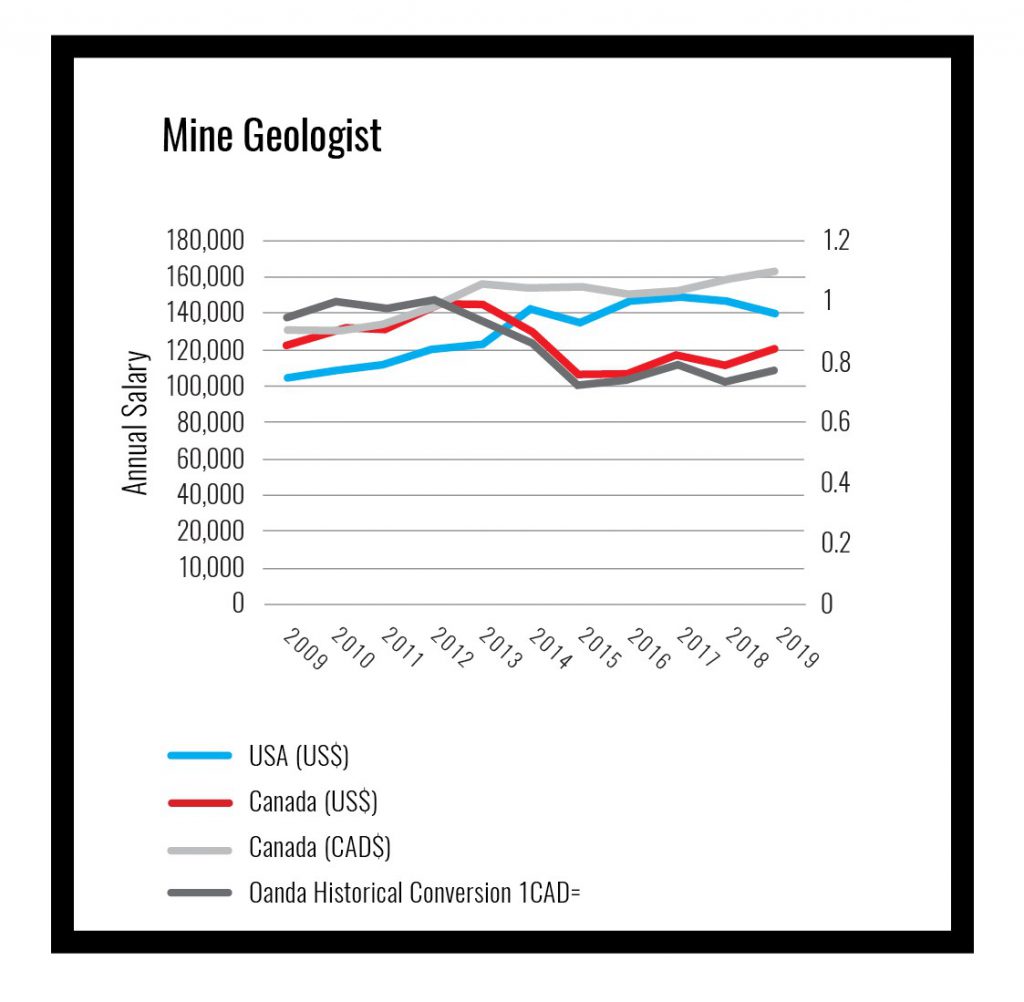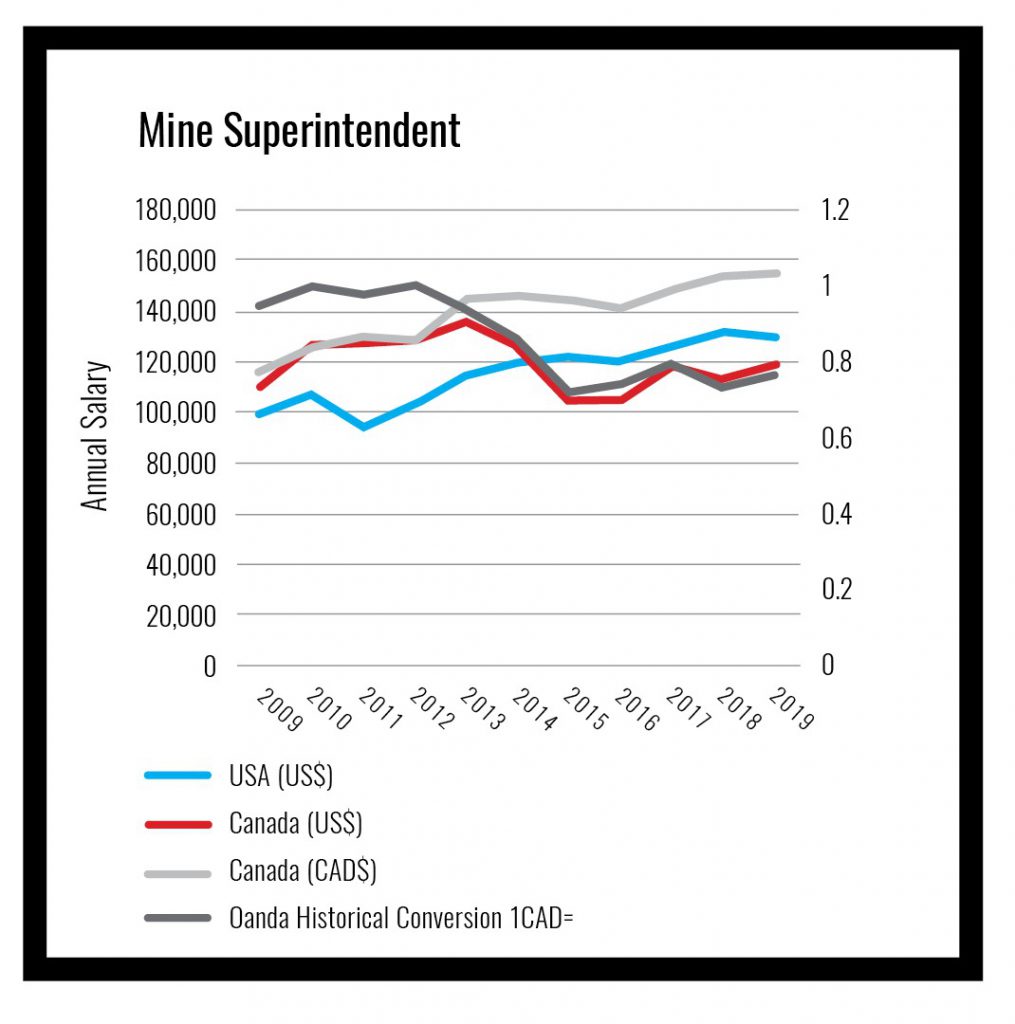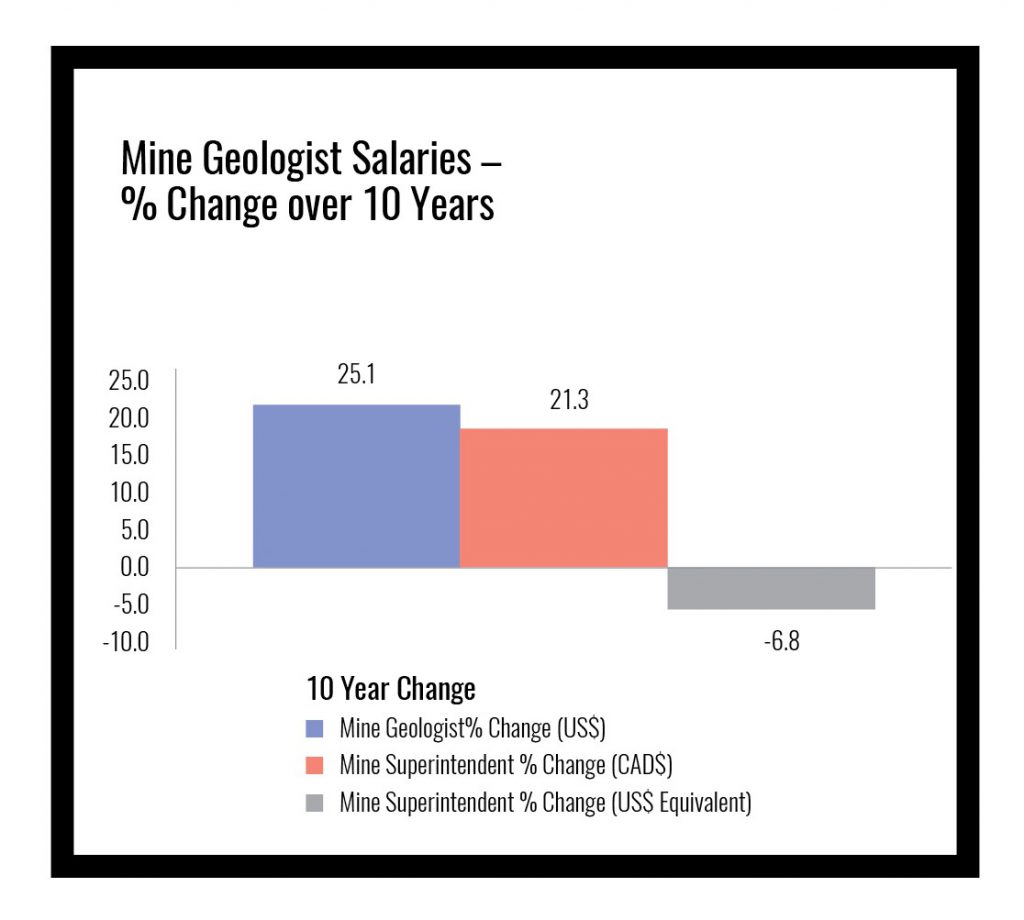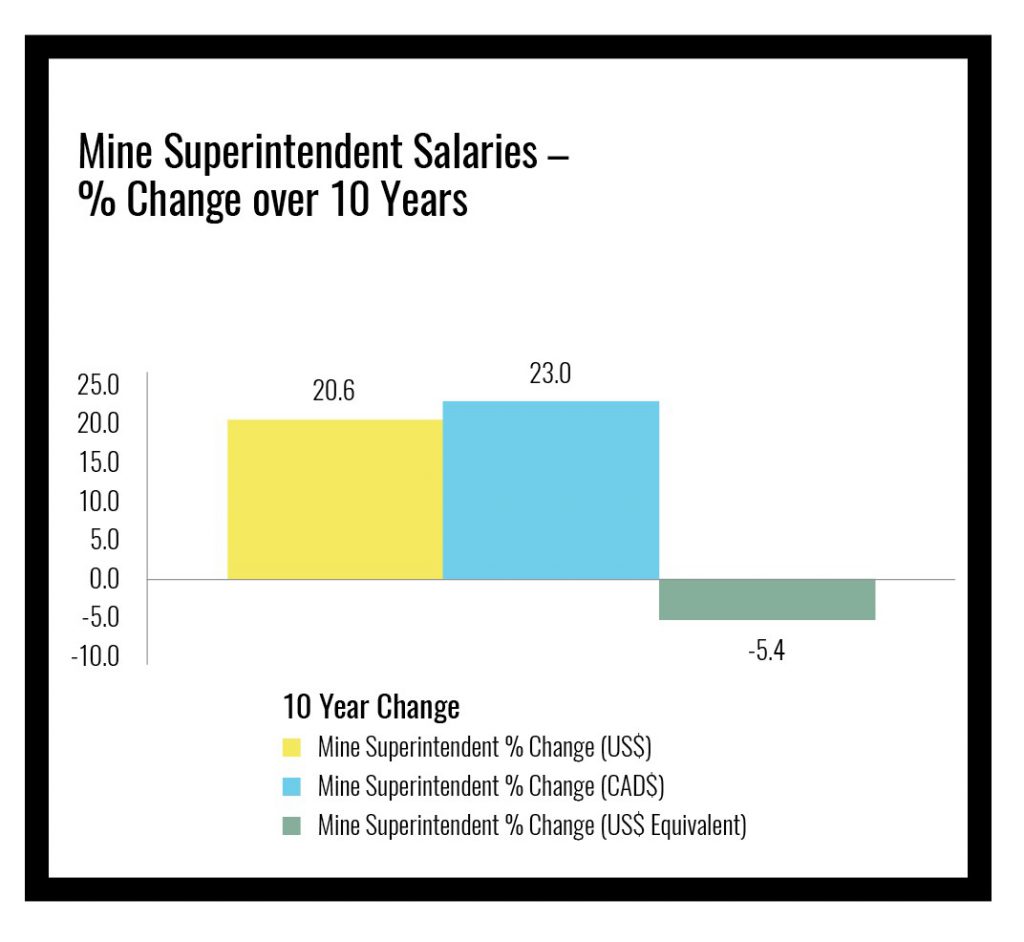Employment in the mining industry is highly specialized and as a result, retaining skilled staff can be challenging. Skilled employees are often the most valuable asset at a mine, and can run anywhere from 25% to 50% of the daily operating costs.
One of the top reasons that employees leave for greener pastures is how much they are paid. Individuals such as geologists, engineers and top line supervisors are in demand and can often find new opportunities fairly quickly. Mines compete for these specialized employees, often recruiting from other countries. As a result, the mining workforce is highly mobile.
Once the exchange rate between the two countries is factored in, the salaries for Canadian mine superintendents and geologists falls far short of their US counterparts beginning in 2015
According to CostMine’s 2019 mine survey results of US and Canadian mines, employees at Canadian mines received a 2 to 4% salary increase for the year, while their US counterparts reported an average increase of 2.7%. These statistics are derived from the results of two surveys completed last year by CostMine.
Taking a longer view, we analyzed the salaries for Canadian and US mine superintendents and mine geologists over the last 10 years, derived from our previous surveys. The charts below show the average annual salaries for these titles at metal mines in Canada and the US, from 2009 to 2019.


In 2009, the salaries were very similar for these professionals between the two countries. It is clear from the charts, that beginning in 2011, US salaries for these titles lagged behind their Canadian counterparts. Our studies show that while salaries expressed in their own currencies have steadily increased over time, once the exchange rate between the two countries is factored in, the salaries for Canadian mine superintendents and geologists falls far short of their US counterparts beginning in 2015. As shown below, the strengthening US dollar shows the impact on Canadian salaries when expressed in US dollars.
From 2010 to 2019, salaries for mine superintendents have increased by 21% in the US, and 23% in Canada. Though, for Canadian mine superintendents, when you factor in the exchange rate, their salary is 5% less than in 2010, when expressed in USD.
Salaries for mine geologists show a similar trend over the last ten years, with the exception of a slight downturn for US geologists in 2019. Even with the decline in 2019, a geologist in the US enjoyed a 25% increase over the last ten years, while Canadians saw a 21% increase. However, as with mine superintendents, when you factor in the exchange rate, Canadian geologists are making almost 7% less than they were in 2010 in USD equivalents.


Are Canadians in the mining industry keeping up with inflation?
According
to Statistics Canada, inflation increased by 16.7% from 2010 to 2019, while
mining wages increased an average of 21%.
So while Canadians may be at a disadvantage compared to their American counterparts, within Canada, wages continue to grow at a pace greater than inflation.
Krista Noyes is a cost analyst/geologist with CostMine, publisher of Mining Cost Service and part of the Glacier Resource Innovation Group, based in Spokane, Washington. She can be reached at [email protected].
CostMine conducts annual surveys of compensation practices at U.S. and Canadian mines. Complete survey reports – including actual wage and salary scales, benefit plan profiles and bonus plans for Canadian mines, and US mines can be purchased from CostMine.






